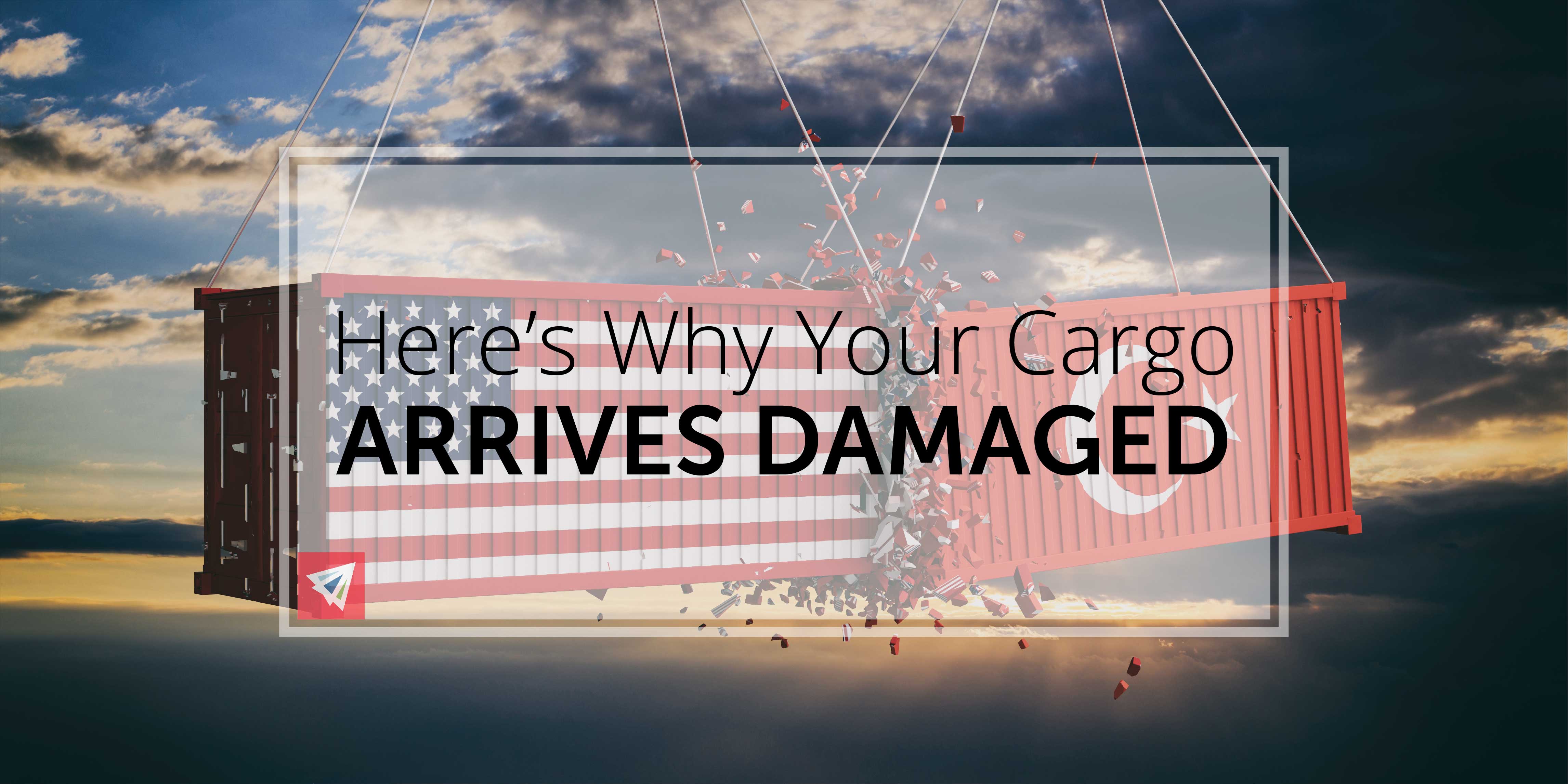Our internal marketing team has identified that the number one pain of importers and exporters today is damaged cargo. The shipping process is a lengthy and expensive ordeal. Aside from the cost of transportation and a broken shipment, the opportunity cost of having empty shelves and no inventory can be detrimental. Although some damage is inevitable, so much damaged cargo can be avoided given the right shipment preparation.
Common Causes of Damaged Cargo
A few of many common causes of damaged cargo are: improper wrapping, failed palletization, consolidation issues, improper packaging, and lack of blocking and bracing. Generally, damaged cargo is a mixture of carrier and shipper fault. Sometimes, containers are improperly loaded, consolidated, or moved, causing goods to shift or break from shock. Other times, shippers have unknowingly improperly prepared their goods for shipping. Here are a few common causes:
Vibration Damage
Vibration damage is perhaps the number one cause of damaged goods. Think about this – from the second your goods are loaded onto a container, they are encountering heavy vibrations until they are dropped at the buyer’s facility. Trucks, trains, airplanes, ocean vessels, etc. They all vibrate to a certain degree. This can cause cargo to break from shock or shift and slide around, causing major scratches or chipped components.
Improper Palletization
Palletizing goods is a more involved process than simply throwing your goods onto a wooden or plastic pallet. There are very specific techniques to palletizing your goods that can help them to avoid damage. Damage is most often caused by vibrations, shifting containers, transloading, and a variety of other factors mid-transit. This can cause goods to shift and scratch each other, or in extreme cases, outright fall off the pallet.
How to Avoid Damaged Goods
No body wants to deal with damaged cargo. If you are looking for ways to reduce the amount of damaged cargo your company receives, follow these 3 primary tips:
1) Blocking and Bracing
Blocking and bracing involves securing cargo to the shipping container itself. While securing goods to themselves and to their pallets is important, without blocking and bracing, cargo can still move about the container. This is most commonly accomplished with wooden or metal rods and ratchet belts secured to the container. Obviously, these rigs have to be customized for each shipment and container, as the most secure blocking and bracing method may vary.
2) Changing Shipping Modes
If you are currently shipping via LCL or LTL shipping methods, it may be time to consider the benefits of full truckload shipping. In LCL and LTL shipping, your goods are consolidated onto a trailer or shipping container with other shippers’ goods. This means your goods are being handled more frequently, causing for a significantly higher change of freight damage.
In full truckload or full container load shipping, you rent an entire container for yourself. Even if you cannot fill the entire container, the space is yours to utilize. Full container load shipments are handled less and move quicker than LCL or LTL shipments. It also means that you have the freedom to block and brace your own container rather than relying on consolidators to properly do the job.
3) Use Impact and Shock Indicators
Impact and shock indicators are inexpensive devices that send alerts to the installer of a shipment that has been jolted, shifted, or dropped in any notable manner. This can help shippers to assess when and where the damage happened, as well as placing accountability on the right party. With this knowledge, shippers can use process of elimination to mitigate their shipping risk by selecting only reliable carriers.
Conclusion
If you are encountering great deals of damaged cargo, it’s time to change your process. Always remember – cargo damage is usually a combination of the carrier and shipper’s fault. You can take steps to reduce the issues presented by both. Properly palletizing, wrapping, and blocking and bracing your cargo can greatly reduce damage due to shifting while in transit. Additionally, shock and impact indicator devices can help shippers to pinpoint what process is inflicting damage on their cargo. This allows shippers to change their processes and carriers to ensure their shipments are handled safely.
We also highly recommend you insure your cargo. Cargo insurance is very inexpensive and can save you tons of money when ship hits the fan.
If you would like to talk to someone more about damaged cargo and how it can be avoided or dealt with, give one of our team members a call! We are happy to help you in any way we can!
